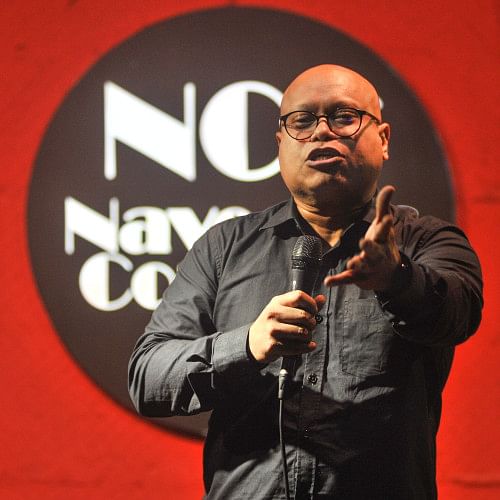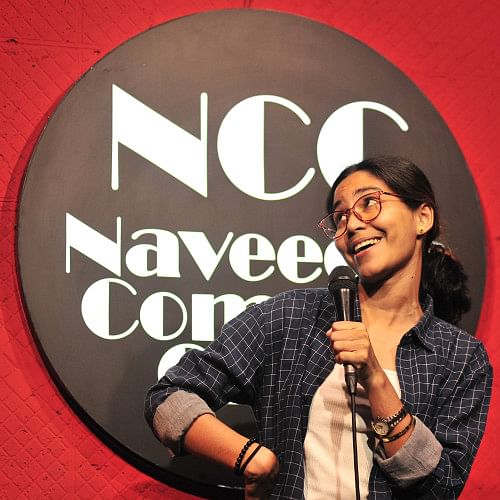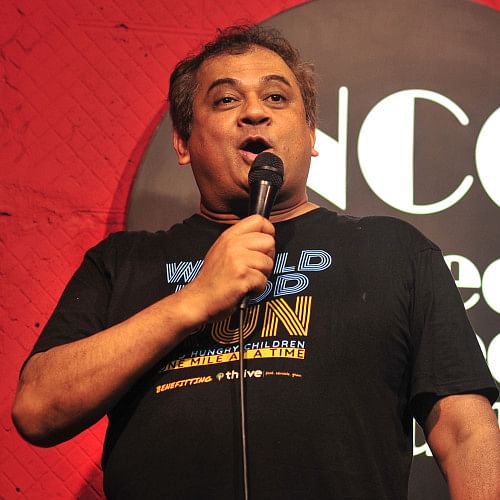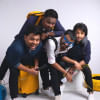Stand-up comedy: How laughter became Dhaka’s favourite therapy

From the witty exchanges of Bengali folk songs and the satirical undertones of theatrical productions to the cheeky punchlines of television dramas, laughter has been an essential part of our culture and a popular outlet for connection and commentary. However, the concept of stand-up comedy, an individual armed with a microphone and delivering witty and observational humour to a live audience, has been a foreign notion until relatively recently.
Over the years, the scene, especially in urban areas like Dhaka, has transformed into the new go-to for entertainment from an obscure idea. So, it is natural for one to wonder how this transformation happened. What made people acknowledge stand-up comedy as a budding art form? The answers lie in the stories of its pioneers and the societal shifts that have shaped its growing popularity.

Ferdous Utsho, an employee at a digital marketing agency, regularly attends shows with his friends to unwind after a hectic workweek.
"On Thursday nights, we gather at a comedy show to catch up and laugh together. It has become our way of escaping the daily grind and starting the weekend on a positive note," he shares.
The beginnings: A slow start
You tell people you're starting a comedy club. What would be their first reaction? Perhaps laughter…but not the good kind!

That's exactly what Naveed Mahbub, one of the pioneers in Bangladesh, faced when he launched Naveed's Comedy Club (NCC), where he now remains as its CEO. According to Mahbub, the story began during the early 2010s — a time when the concept was barely understood.
He elaborates, "When we started the Club back in 2010, the biggest challenge was finding performers. We didn't have many comedians at the time, and to organise regular shows, we needed a consistent line-up."
In the beginning, shows were sporadic, poorly attended, and often misunderstood by the majority. Sadly, artistes who emerged during this time leaned heavily toward slapstick or theatrical humour and borrowed inspiration from Western styles.

Remembering the initial struggles, Sami Doha, a telecom expert turned celebrated stand-up comedian, says, "You see, back then, performances were mainly Dhaka-centric, and shows were sporadic. The audience did not quite understand what stand-up comedy was, and performers were few and far between. Everyone considered it to be a hobby and not a profession."
The lack of platforms only contributed to the struggle, as early enthusiasts mostly performed in cafés or as opening acts for bigger events. Nevertheless, the hurdles were there, and so was the determination.
The turning point
According to Naveed Mahbub, the advent of social media platforms in the 2010s was a game-changer for the stand-up comedy scene, with Facebook and YouTube becoming vital tools for performers to share content, reach wider audiences, and establish a presence beyond live shows.

"Digital media, especially social media, has played a central role in spreading the word," says Mahbub. "With comedians sharing reels, shorts, and videos online, it has noticeably boosted awareness and interest in stand-up comedy."
Thanks to this digital revolution, the reach of comedy was not only amplified, but audiences started to become aware of the format.
Echoing the same sentiment, Doha shares, "Truly, social media has been a game-changer for the comedians. Regular reels and videos rack up hundreds of thousands of views, helping us build fan bases far beyond Dhaka. On top of that, stand-up specials on OTT platforms have also brought Bangladeshi comedy to new heights."

With time, open mics became more frequent, and stand-up comedians gained visibility. Now, there are organisations like Naveed's Comedy Club (NCC) and Standup Dhaka that dedicatedly nurture new talents. The popularity and support those performers have received have paved the way for a growing talent pool, making it easier to organise regular shows not only in Dhaka but also in other districts.
A flourishing phenomenon
Today, the scene in Bangladesh has come a long way from its humble beginnings. We now see cities like Dhaka and Chattogram hosting regular events, ranging from intimate open mics to large-scale performances. Moreover, shows are performed weekly and in our native language, which has made stand-up comedy more relatable to wider audiences and created a thriving community of enthusiasts.
Dhaka has become the epicentre of this cultural shift, as Doha details, "The city boasts multiple shows, thanks to relentless efforts from dedicated venues and organisers."
He highlights how the frequency of these events has fostered a sense of community among comedians and allowed audiences to develop a deeper appreciation for stand-up comedy as an art form.
Comedians now focus on everyday themes that the audience can connect with, from the chaos of Dhaka's traffic to quirky family dynamics and the absurdities of bureaucracy and politics. These topics are mostly delivered in the audience's native language, which has further increased its popularity.

"I would say it is both a challenge and a thrill when it comes to tailoring jokes that cater to a diverse Bangladeshi audience," says Doha. The art lies in addressing shared experiences while respecting cultural sensitivities."
While people elsewhere might delve into edgy or provocative material, Bangladeshi performers often take a more discreet and sober approach, balancing humour with respect for societal norms.
Major milestones, such as Shilpakala Academy hosting its first-ever stand-up comedy show in 2024, have further legitimised the art form. The show featured notable performers like Mahedi Hasan Toru, Akhlaq Siddiqi, and Shawon Majumder.
Events like these demonstrate that stand-up comedy is no longer confined to niche spaces but is becoming an accepted and celebrated part of Bangladesh's cultural landscape. Moreover, events like the Roast of Salman Muqtadir, which raised funds for flood victims, have demonstrated that Bangladeshi audiences are open to edgier humour, provided it is handled with sensitivity.
Another defining feature of today's stand-up scene is how people are experimenting with different styles. You may notice some using observational humour while others rely on self-deprecating humour and light-hearted commentary on societal taboos. This growing diversity is truly commendable and the best part about this is the development of a unique sense of community among comedians and audiences.
As the scene continues to expand, its role as both an entertainment medium and a social gathering phenomenon is becoming increasingly important. This shift highlights the broader cultural impact of stand-up comedy in Bangladesh. It's not just about the jokes — it's about bringing people together and creating moments of joy in a fast-paced world.
Photo: Courtesy; Shadab Shahrokh Hai

 For all latest news, follow The Daily Star's Google News channel.
For all latest news, follow The Daily Star's Google News channel. 








Comments